The first auction, M.U.S.C.L.E. Men Lot of 28 Muscle Figures vintage Plus 1975 Diener Monsters, is a great mixed lot. There are some M.U.S.C.L.E. figures and some Diener, but the relatively large group of counterfeit figures is very attractive. Lots like this one do not appear with the same frequency they once did. And when they do appear the price tag tends to be overly inflated.
This lot starts at $9.99 which isn’t awesome, but it is not too bad either. Based on only the picture it looks like these counterfeit figures are Type F. Each collector will have their own favorite type of counterfeit figure, but these are arguably some of the most interesting and charming.
I wish these interesting mixed lots appeared more often on eBay. I believe lots like this one were the fodder that created many of the niche M.U.S.C.L.E. collecting pockets that exist today. It may seem this lot represents a longing for the early days of collecting. Instead I see it as a longing for people to discover the many simple joys of these interesting figures.
The second lot, m.u.s.c.l.e. lot, is another lot featuring some counterfeit figures. However this auction is far more representative of the lots with counterfeit figures available today.The lot has two of the delightful, simply-painted counterfeit figures. There may be a third counterfeit figure or it could be terribly faded. Sadly this lot of eight figures is priced at $20 for an opening bid and a BIN of $30. Even with free shipping this lot is horribly overpriced.
Collectors of counterfeit figures appreciate the charisma of these figures. However, they are well-known to not over spend on these figures. Given that most people see these counterfeit figures as garbage it is the very, very rare exception when a premium price can be commanded. This may be the last time some counterfeit figures demanded a premium – and even these were not very high.
The last three auctions are highlighted because of an astute comment on LRG. It’s a comment I agree with 100% and have spoken about at length. I won’t repeat myself and bore you.
These three auctions highlight the widespread perversion of the Class ratings and the complete absurdity of the ratings in relation to price.
The Class system, very simply, was designed to give a rough guide to collectors. I imagined collectors using it when they came across figures at a flea market or garage sale, “Should I pay $2 for this figure?”
The collector could check the guide, and then see it was a Class C. “Forget it.”
Or conversely, “It’s a Class A, I should probably pick it up.”
These three auctions highlight the absurdity and fearful subjectivity that has been attached to the rating. All three of these figures are labeled Class A. However the highest and lowest BIN’s differ by 164%. Perhaps an argument could be made suggesting popularity plays into the price difference. But the only figure which could be argued is over 100% more popular than any other figure would be the #153 figure.
I would argue all of these figures are overpriced. But that is my opinion. Other people may feel differently. However, I would like two things explained to me:
- If $19.95 is a fair price for a Salmon #167, then why is a Dark Blue #73 worth 120% more?
- If $79.95 is a fair price for Dark Blue #73, then why is Green #189 worth 86% more?
I do not believe a valid argument could be made.
I set out to help collectors. I felt bad for a little bit. Maybe I had made things worse. I don’t feel bad anymore. You can’t influence anyone unwilling to listen to logic. The system is still helpful for collectors, but believers believe their own twisted logic.
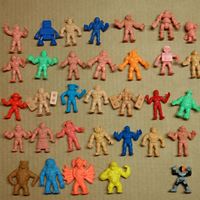

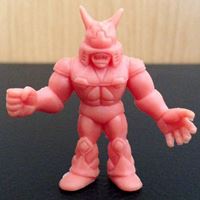
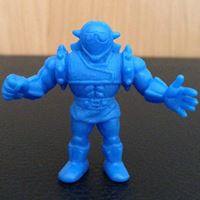
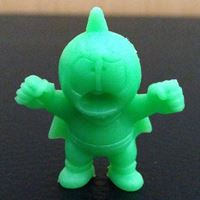
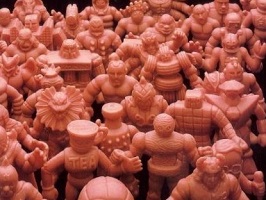
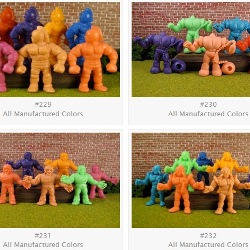
#1 by Nick on September 10, 2015 - 8:06 am
Hey man as far as the classification system goes I appreciate it but at the same time I have mixed emotions about why it need be. I don’t fault you at all for creating it. The prices of said class A’s wouldn’t be nearly where they are without it. As for the argument about the swap meets and weather a figure is a class a, b , or c kinda doesn’t hold water for me. Why buy a Class A if you don’t need it for a collection. You either need to figure or you don’t.
#2 by Chad Perry on September 10, 2015 - 9:12 am
You disagree with how I imagined the guide being used?
Um, ok. I can’t argue with that.
#3 by Nick on September 10, 2015 - 9:22 am
No and sorry if you took it the wrong way. I applaud your efforts to help us all. No disrespect.
I collect for the fun of it and not resale so my view might be different from everyone else. My oppinion was that I really don’t need to know what class a figure is. If I happen to stubble across a lot a muscle that I need for my collection I’m going to want it whether or not it’s rare. That’s all.
#4 by Chad Perry on September 10, 2015 - 10:38 am
Honestly, feel free to disrespect me. No worries. I love a good discussion.
I don’t want to keep quoting myself, but re-read the opening to the M.U.S.C.L.E. guide. I really meant it for a guide – not a price guide.
I love uncovering the minutia of M.U.S.C.L.E., the guide was driven by trying to understand how the figures were made. Why do we see some more than others?
I wanted to share what I had found, based on the data that was available.
Even more practically, at the time I was going for a Master Set. I wanted to understand which figures might be a little harder to find. I can remember the comic shop I stood in thinking, “Should I pay $1 each for these?” That experience kicked off my need for answers – and eventually, the guide.